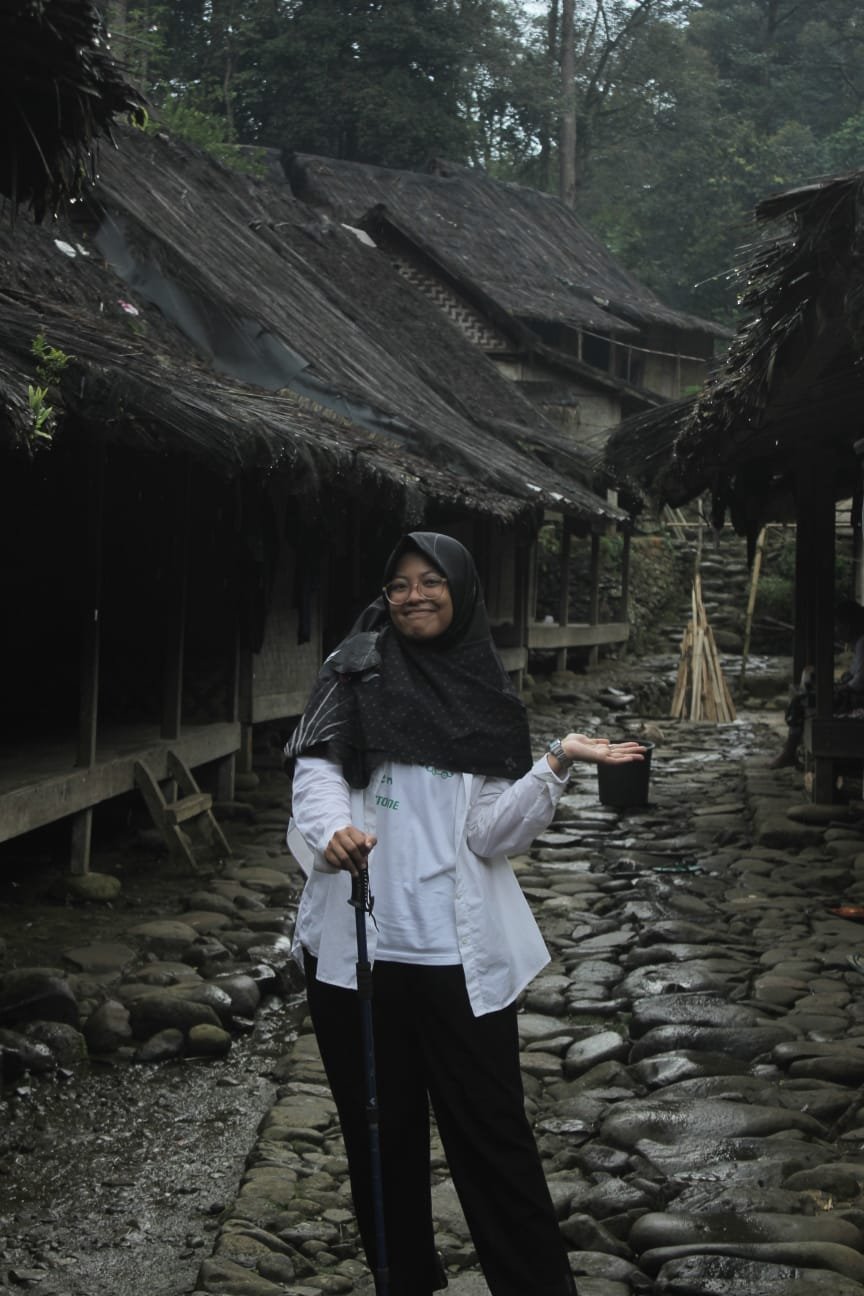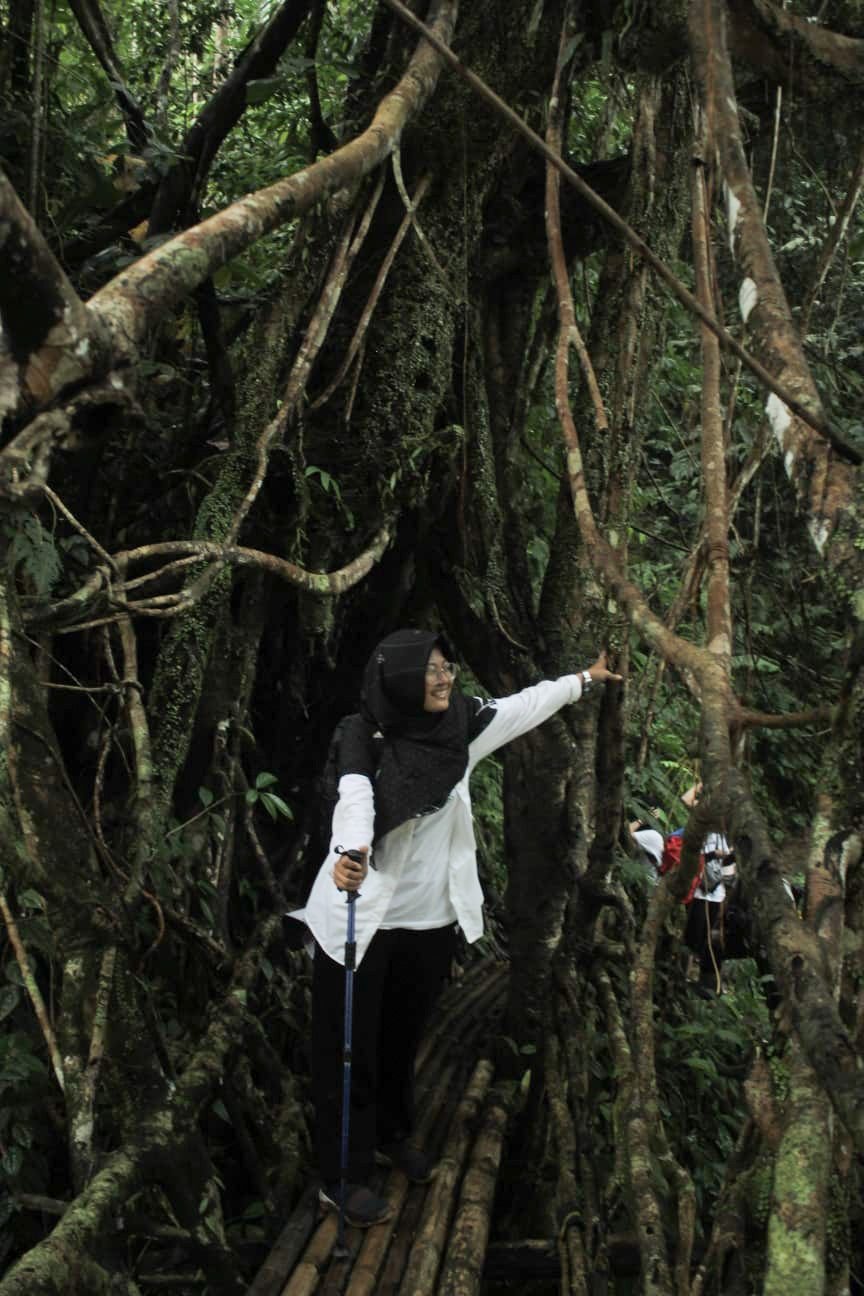Saturday was a day that I have been eagerly waiting for. With a backpack on my back and a bag of snacks in my hand, I took the Tanah Abang (Jakarta) - Rangkasbitung (Banten) train for 1,5 hours. Quite near from the megapolitan city, we would visit one of the most ‘traditional’ tribes in Indonesia. The day’s special agenda was to visit or ‘Silaturahmi’ the Baduy Luar (Outer Baduy) Village in Lebak, Banten.
Silaturahmi is the term used to refer visitors when visiting Baduy. As guests, of course, visitors must also respect the customs and rules of the host. Unfortunately, this time we could only visit the Baduy Luar, considering that the Baduy Dalam (Inner Baduy) is currently closed to respect their worship in the month of Kawalu.
Baduy is an indigenous tribe originated in Lebak Regency, Banten Province. This tribe is known for strictly practising their customs, without the interference of technology or modernity. In 2023, how can the Baduy tribe live independently without technology? Let's discuss further through this journey.
After arriving at Rangkasbitung, we were picked by the guides and driver to continue a minibus ride for almost 2 hours. By the ride, we passed by the roads, and compared how different the mega city Jakarta and rural villages in Lebak. Later the bus stopped at the nearest village from Baduy.
The rest of the journey to Baduy must be done on foot. Yes, the terrain to the Baduy Luar is not accessible by any vehicle. The steep, up and down roads, crossing hills and rivers, were very challenging. Even with the help of a headlamp to light the way and trekking poles as a tool to step on, exploring almost 6 hours of challenging terrain was quite tiring.
We passed one by one of the villages. Most of them were empty during the daylight, as the people were working in their farms. The farms are located outside the village, said one of our guides, the 10 years old boy named Armuta. Armuta, just like other Baduy males, wore a black shirt and shorts with no slippers. He walked fine, as if the road was so easy for him. Meanwhile most of us the visitors were already wet in sweats and short breath.
Reaching almost the last village we were about to stay, the night came. The mist and chill started to hit me up. It was around 20° C. The road was totally dark, and shined by our headlamps. We saw the muddy road ahead, inhaling the fresh air, in between tired and excitedness.
Upon arriving at the fifth Baduy Village, it was very dim. The only lights available were petromax or solar-powered lights. The Baduy Luar is a little ‘looser’ in terms of technology. The use of lights and cleaning tools such as soap and shampoo are still allowed. Their other families from Baduy Dalam strictly prohibit any kind of technology, even believing that if the rule is broken, there might be any ‘curse’ or bad things happening afterward.
The housing system in Baduy village is unique. They built houses from wooden and bamboo, without cement, nails, or paint. These houses are proven to be strong enough to withstand earthquakes that have hit Banten several times. The typical Baduy house is called Sulah Nyanda.
In addition to houses, there are also other buildings called Leuit, which function as Baduy people's rice barns. This Leuit is very unique, having legs between 9-14 pieces, which shows its capacity. Leuit is also made of wood and bamboo. Without nails, it stands firmly supported by wooden locks.
In the morning, after resting, I talked with Kang Doni, Kang Asep, and Teh Nasya. Kang Doni is one of the Baduy Dalam youth who became our guide and porter. He has been welcoming guests who visit Baduy for the past 4 years.
Although many people outside consider the Baduy tribe to be very ‘closed’, including me, it turns out that they are friendly and open. This assumption refers to the strong principles believed by the Baduy people, including not using technology such as TVs, cell phones, and motor vehicles, as well as not attending formal schools. For the Baduy people, they learn directly from their parents, elders, and life experiences.
Kang Asep is one of the heads of RT in the 5th village of the Baduy Luar, and was elected last year. He is still very young, only 20 years old, and father of a daughter. In Baduy, young people usually get married at a young age, usually 15-17 years for women, and 18-20 years for men. However, according to them, that age is considered mature. Because Baduy children are accustomed to working with their parents in the fields from the age of 8-10, such as starting to plant, wood, and cook.
The land and house inheritance system is also unique in Baduy. Rarely are new houses built because usually newlyweds will live in their parents' house until they inherit the house. Unlike land, which can be bought and sold for cultivation purposes.
We stayed at Teh Nasya's house. Teh Nasya is an 18-year-old native of the Outer Baduy who is 5 months pregnant. Teh Nasya lives with her husband. Like other Baduy houses, Teh Nasya also has a kitchen with firewood. Teh Nasya cooked eggs, fried tempeh, and fried rice when we arrived. The food was delicious, with the scent of firewood. In Baduy, women usually work in the fields. They plant rice, ginger, galangal, and various other plants. The results of the harvest are usually used for personal consumption, and sometimes sold in markets if they are excessive.
Looking at the Baduy village, I was very amazed by the natural beauty of the surrounding forests. According to Kang Doni, the Baduy people divide their forests into 3 types, namely:
1. The Prohibited Forest, which cannot be entered carelessly. It is also forbidden to take anything inside and not allowed to open fields. Usually, this forest is used as a place for Baduy tribal ceremonies because it is sacred.
2. Dudungusan Forest, which is located at the headwaters of the river, is protected and a sacred place for the Baduy tribe, similar to the Prohibited Forest.
3. The Cultivated Forest, which is an area that can be cultivated by the Baduy people as agricultural land, including rice fields. The system of this field and rice field is quite unique because people can farm on the sloping and steep hillsides.
Large trees in Baduy reach tens of metres in height, such as Coconut, Bamboo, and Durian trees. Baduy children are usually trained in their strength by carrying Durian fruit during the harvest. One child can carry up to 20 durian fruits in a cloth bag that they usually carry. It is no wonder that when we were all panting climbing up the hills, the Baduy children who accompanied us showed no signs of fatigue or sweating. For them, it is normal to carry dozens of kilograms of goods and walk tens of kilometres without footwear or other aids.
I followed this journey through the Baduy Tribe Tour or Wisuba, which was initiated by Banten youth who embraced the Baduy community to see their daily lives. One of them is Kang Arif, who guided our group, group 2. Kang Arif comes from Anyer, Banten. Initially, Kang Arif joined to help his friend, besides his job as a teacher. It turns out that being in Baduy was a source of entertainment amidst his busy job, so every week Kang Arif spends his time as a guide. Kang Doni is one of the Baduy people who was "pulled" by Kang Arif and became a guide and porter. In addition to bridging visitors and the Baduy people as hosts, the Baduy Tribe Tour also drives the Baduy people's economy through guiding, portering, accommodation, and also typical Baduy souvenirs. Through the Baduy Tribe Tour, it proves that the management of indigenous cultural heritage has the potential to offer ecotourism as well as education for the broader community interested in indigenous culture.
Written by Masayu Tiara







